
Perspectives
Opinions on and about gene drive technologies and their uses.
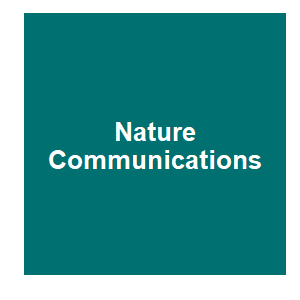
|
A gene drive is a gene drive: the debate over lumping or splitting definitionsS. L. James, D. A. O'Brochta, F. Randazzo and O. Akbari, Nature Communications, 2023.
Gene drive technologies are being considered as a new approach to address a variety of currently intractable global problems, including to prevent disease transmission, reduce crop loss, and preserve biodiversity1. There are some outside the genetics research community who argue ... Keywords: Gene drive, GMO, mosquitoes, opinion, Uganda |

|
Synthetic gene drives as an anthropogenic evolutionary forceA. D. Cutter, Trends in Genetics, 2023.
Genetic drive represents a fundamental evolutionary force that can exact profound change to the genetic composition of populations by biasing allele transmission. Herein I propose that the use of synthetic homing gene drives, the human-mediated analog of endogenous genetic ... Keywords: Gene drive, GMO, mosquitoes, opinion, Uganda |

|
Gene Drives Are ComingD. Lowe, Science, 2023.
Consider the “gene drive” idea - there are a lot of variations, but the general idea is that you introduce a genetic sequence into an organism that can bias (drive) its own inheritance into the next generation. This is a thumb-on-the-scale unnatural selection if ever there ... Keywords: Gene drive, GMO, mosquitoes, opinion, Uganda |

|
Gene Drives: Target Malaria is underestimating the risksC. Then, Testbiotech, 2023.
The Target Malaria consortium has for several years been planning to conduct field trials using genetically engineered mosquitoes in Burkina Faso. The aim is to transfer artificial gene constructs, i. e. the so-called ‘X-shredder’, into wild populations of the mosquitoes. ... Keywords: Gene drive, GMO, mosquitoes, opinion, Uganda |

|
Gene Drives and Vector-Borne Diseases: A Comparative Perspective Using Malaria as a Case StudyS. Todi, The Takshashila Institution, 2023.
Gene drives are an emerging technological application to reduce the prevalence of vector-borne diseases, crop pests, and non-native invasive species. This method for vector control is currently at the research stage, with parallel community engagement programmes being carried out ... Keywords: Gene drive, GMO, mosquitoes, opinion, Uganda |

|
Gene Drives and Vector-Borne Diseases: A Comparative Perspective Using Malaria as a Case StudyS. Todi, The Takshashila Institution, 2023.
Gene drives are an emerging technological application to reduce the prevalence of vector-borne diseases, crop pests, and non-native invasive species. This method for vector control is currently at the research stage, with parallel community engagement programmes being carried out ... Keywords: Gene drive, GMO, mosquitoes, opinion, Uganda |
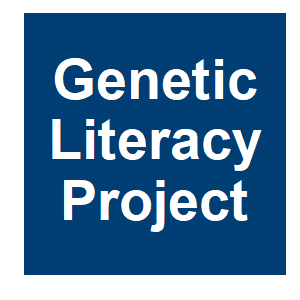
|
Social justice environmental activists move to block gene editing to control invasive species and promote biodiversity. Here’s why they’re misguidedS. Smyth, Genetic Literacy Project, 2023.
Control of invasive species has been extremely difficult with eradication virtually impossible. To control invasive plant species, chemicals are commonly used while in some instances removal of plants by hand, as Shiva advocates, is undertaken. Efforts to control invasive animals ... Keywords: Gene drive, GMO, mosquitoes, opinion, Uganda |

|
Complicated expansion trajectories of insertion sequences and potential association with horizontal transfer of Wolbachia DNAY. H. Miao, D. W. Huang and J. H. Xiao, Zoological Research, 44:273-275. 2023.
Insertion sequences (ISs) are the simplest structural transposable elements (TEs) in prokaryotes, consisting only of a transposase coding sequence and its bilateral short terminal inverted repeats. Due to their gradually streamlined genomic construction, TEs rarely exist in the ... Keywords: Gene drive, GMO, mosquitoes, opinion, Uganda |

|
Gene Drives Could Fight Malaria and Other Global Killers but Might Have Unintended ConsequencesM. Cobb, Scientific American, 2023.
Every year more than 600,000 people die from mosquito-transmitted malaria, most of them children under age five. Some insects that are disease vectors, such as mosquitoes, are currently expanding their range around the world, bringing new threats. Genetic engineering can fix this ... Keywords: Gene drive, GMO, mosquitoes, opinion, Uganda |

|
CRISPR Gene Drives: A Weapon of Mass Destruction?J. Ng, Medium, 2022.
Gene drives allow scientists to “drive” new genes — and their associated traits — into wildlife populations at unprecedented rates. Here’s a simplified explanation of how gene drives work. In normal sexual reproduction between species with two copies of chromosomes, ... Keywords: Gene drive, GMO, mosquitoes, opinion, Uganda |
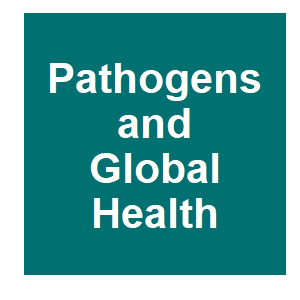
|
Genes drive organisms and slippery slopesD. B. Resnik, R. F. Medina, F. Gould, G. Church and J. Kuzma, Pathog Glob Health, 2022.
The bioethical debate about using gene drives to alter or eradicate wild populations has focused mostly on issues concerning short-term risk assessment and management, governance and oversight, and public and community engagement, but has not examined big-picture- 'where is this ... Keywords: Gene drive, GMO, mosquitoes, opinion, Uganda |

|
Gene drive-mediated population elimination for biodiversity conservation. When you come to a fork in the road, take itB. A. Hay and M. Guo, Proceedings of the National Academy of Sciences, 119:e2218020119. 2022.
How can the ability of t w2 to spread at super-Mendelian frequencies be utilized even if it is unable to directly drive the population to an unfit state? Gierus, Birand, and colleagues proposed placing Cas9 and a gRNA at a neutral position within the t haplotype. In this hybrid ... Keywords: Gene drive, GMO, mosquitoes, opinion, Uganda |

|
Gene editing and agrifood systemsFAO, FAO, 2022.
Gene-editing technologies represent a promising new tool for plant and animal breeding in low- and middle-income countries. They enhance precision and efficiency over current breeding methods and could lead to rapid development of improved plant varieties and animal breeds. ... Keywords: Gene drive, GMO, mosquitoes, opinion, Uganda |
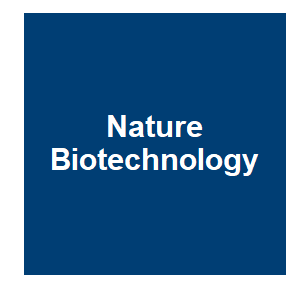
|
Exploring the value of a global gene drive project registryR. I. Taitingfong, C. Triplett, V. N. Vásquez, R. M. Rajagopalan, R. Raban, A. Roberts, G. Terradas, B. Baumgartner, C. Emerson, F. Gould, F. Okumu, C. E. Schairer, H. C. Bossin, L. Buchman, K. J. Campbell, A. Clark, J. Delborne, K. Esvelt, J. Fisher, R., Nature Biotechnology, 2022.
Recent calls to establish a global project registry before releasing any gene-drive-modified organisms (GDOs) have suggested a registry could be valuable to coordinate research, collect data to monitor and evaluate potential ecological impacts, and facilitate transparent ... Keywords: Gene drive, GMO, mosquitoes, opinion, Uganda |
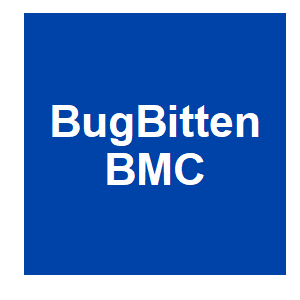
|
Good news in the fight against vector-borne diseasesK. Magori, , 2022.
At the turn of the century, several research groups attempted to apply modern genetic methodologies to achieve similar outcomes without the need for irradiation and the resulting fitness costs. Luke Alphey and his colleagues at Oxford University developed a dominant lethal ... Keywords: Gene drive, GMO, mosquitoes, opinion, Uganda |

|
No Environmental Release of Gene Drive OrganismsAnonymous, STOP GENE DRIVES, 2022.
We urge governments to prevent the environmental release of gene drive organisms and to establish a global moratorium on the release of gene drive organisms at the UN Convention on Biological Diversity (CBD). Gene drives work against natural rules of inheritance forcing nearly ... Keywords: Gene drive, GMO, mosquitoes, opinion, Uganda |

|
Should we use a genetic weapon against mosquitoes carrying malaria?T. H. Saey, ScienceNewsExplores, 2022.
In a large laboratory cage, a male mosquito carries a genetic weapon that could launch the destruction of his species. That loss could also mean the end of the parasite that causes malaria. The weapon? A self-replicating bit of DNA known as a gene drive. It’s one of the most ... Keywords: Gene drive, GMO, mosquitoes, opinion, Uganda |
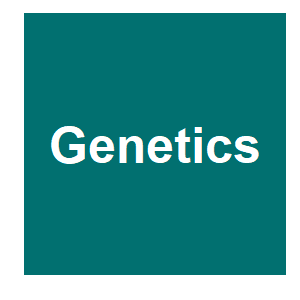
|
Driving lessons: a brief (personal) history of centromere driveH. S. Malik, Genetics, 2022.
Meiosis is an important specialized cell division in many eukaryotic species, including fungi, plants, and animals. Meiosis results in the production of haploid gametes starting from a diploid cell via 1 round of replication and 2 rounds of cell division. In an influential ... Keywords: Gene drive, GMO, mosquitoes, opinion, Uganda |

|
SHOULD WE CREATE GENE DRIVE GREY SQUIRRELSS. Hartley and T. Law, GeneDriveGovernance.org, 2022.
UK scientists have proposed gene drive as a management tool to control grey squirrels. Now is a good time to talk about this emerging technology because the hopes and concerns of experts, stakeholders and the public can help to determine if or how it might be developed. To help ... Keywords: Gene drive, GMO, mosquitoes, opinion, Uganda |

|
WORLDWIDE: EXPERTS ON GENE DRIVESStop Gene Drive, STOP GENE DRIVES, 2022.
We are travelling the world speaking to some of the world’s leading thinkers, activists and academics on the impact of gene drives. We interviewed more than 20 experts from around the world Keywords: Gene drive, GMO, mosquitoes, opinion, Uganda |

Contact
David O’Brochta
Foundation for the
National Institutes of Health
geneconvenevi@fnih.org
RSS

